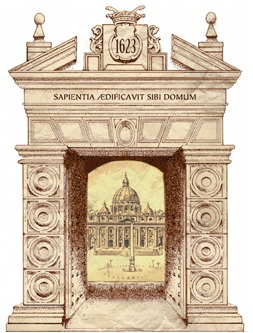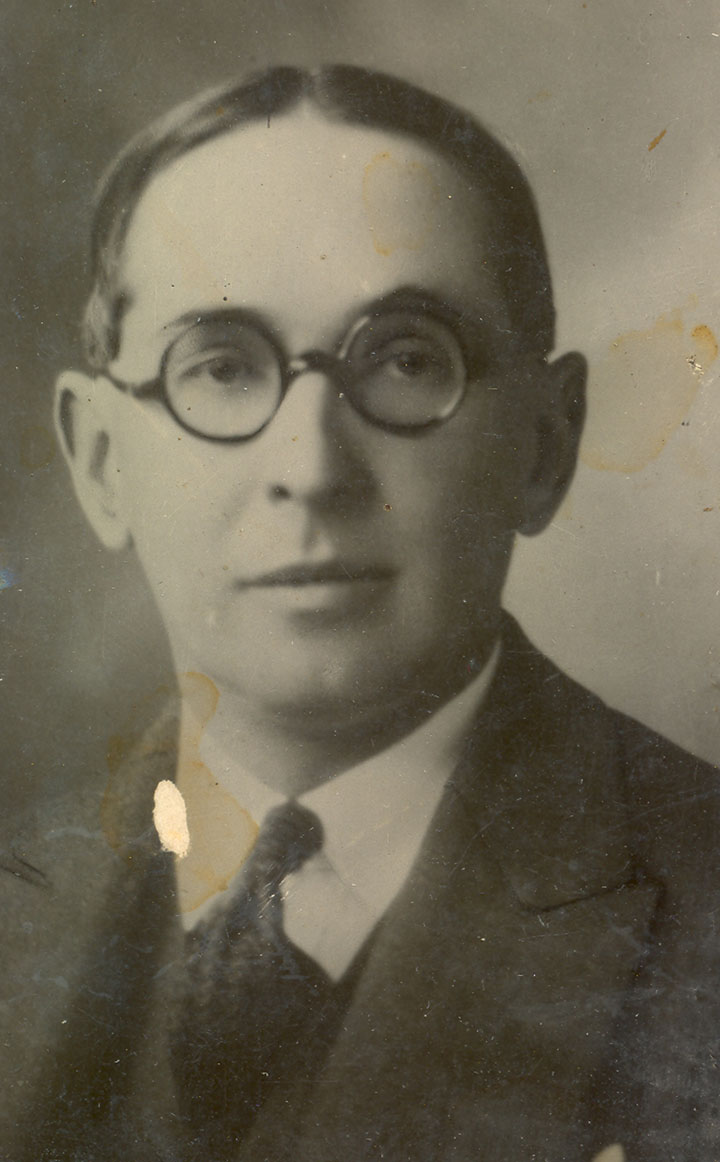|
Hotel Tequendama
Hotel Tequendama & Centro de Convenciones (Convention Center) is an historic hotel in Bogotá, Bogotá, Colombia. It is located in the San Diego, Bogotá, San Diego neighborhood of the town of Santa Fe, Bogotá, Santa Fe at the intersection of Tenth Avenue and Twenty-Sixth Avenue. The hotel, designed by Holabird & Root, John Burgee, and the Colombian architectural firm Cuéllar Serrano Gómez, was constructed between 1950 and 1951. Between 1967 and 1970, the hotel was expanded to double its original size. History The Hotel Tequendama occupies the grounds of the former San Diego cloister, the Escuela Superior de Guerra (Colombia), Superior School of War, the José María Córdova Military School, Military School and the Ministry of National Defense (Colombia), Ministry of Defense. The hotel was the first building constructed in the Centro Internacional Tequendama complex. Its construction took place within the framework of the expansion of Tenth Avenue. When first constructed, th ... [...More Info...] [...Related Items...] OR: [Wikipedia] [Google] [Baidu] |
Bogotá
Bogotá (, also , , ), officially Bogotá, Distrito Capital, abbreviated Bogotá, D.C., and formerly known as Santa Fe de Bogotá (; ) during the Spanish period and between 1991 and 2000, is the capital city of Colombia, and one of the largest cities in the world. The city is administered as the Capital District, as well as the capital of, though not part of, the surrounding department of Cundinamarca. Bogotá is a territorial entity of the first order, with the same administrative status as the departments of Colombia. It is the political, economic, administrative, and industrial center of the country. Bogotá was founded as the capital of the New Kingdom of Granada on 6 August 1538 by Spanish conquistador Gonzalo Jiménez de Quesada after a harsh expedition into the Andes conquering the Muisca, the indigenous inhabitants of the Altiplano. Santafé (its name after 1540) became the seat of the government of the Spanish Royal Audiencia of the New Kingdom of Granada (cre ... [...More Info...] [...Related Items...] OR: [Wikipedia] [Google] [Baidu] |
Chibcha Language
Chibcha, Mosca, Muisca, Muysca (*/ˈmɨska/), or Muysca de Bogotá, was a language spoken by the Muisca people of the Muisca Confederation, one of the many Indigenous peoples in Colombia, indigenous List of pre-Columbian cultures, cultures of the Americas. The Muisca inhabited the Altiplano Cundiboyacense of what today is the country of Colombia. The name of the language ''Muysc Cubun'' in its own language means "language of the people", from ''muysca'' ("people") and ''cubun'' ("language" or "word"). Despite the disappearance of the language in the 17th century (approximately), several language revitalization processes are underway within the current Muisca communities. The Muisca people remain ethnically distinct and their communities are recognized by the Colombian state. Important List of Muisca scholars, scholars who have contributed to the knowledge of the Chibcha language include Juan de Castellanos, Bernardo de Lugo, José Domingo Duquesne and Ezequiel Uricoechea. His ... [...More Info...] [...Related Items...] OR: [Wikipedia] [Google] [Baidu] |
Hotels In Bogotá
A hotel is an establishment that provides paid lodging on a short-term basis. Facilities provided inside a hotel room may range from a modest-quality mattress in a small room to large suites with bigger, higher-quality beds, a dresser, a refrigerator and other kitchen facilities, upholstered chairs, a flat screen television, and en-suite bathrooms. Small, lower-priced hotels may offer only the most basic guest services and facilities. Larger, higher-priced hotels may provide additional guest facilities such as a swimming pool, business centre (with computers, printers, and other office equipment), childcare, conference and event facilities, tennis or basketball courts, gymnasium, restaurants, day spa, and social function services. Hotel rooms are usually numbered (or named in some smaller hotels and B&Bs) to allow guests to identify their room. Some boutique, high-end hotels have custom decorated rooms. Some hotels offer meals as part of a room and board arrangement. In Jap ... [...More Info...] [...Related Items...] OR: [Wikipedia] [Google] [Baidu] |
Buildings And Structures In Bogotá
A building, or edifice, is an enclosed structure with a roof and walls standing more or less permanently in one place, such as a house or factory (although there's also portable buildings). Buildings come in a variety of sizes, shapes, and functions, and have been adapted throughout history for a wide number of factors, from building materials available, to weather conditions, land prices, ground conditions, specific uses, prestige, and aesthetic reasons. To better understand the term ''building'' compare the list of nonbuilding structures. Buildings serve several societal needs – primarily as shelter from weather, security, living space, privacy, to store belongings, and to comfortably live and work. A building as a shelter represents a physical division of the human habitat (a place of comfort and safety) and the ''outside'' (a place that at times may be harsh and harmful). Ever since the first cave paintings, buildings have also become objects or canvasses of much artis ... [...More Info...] [...Related Items...] OR: [Wikipedia] [Google] [Baidu] |
Pontifical Xavierian University
The Pontifical Xavierian University (in Spanish Pontificia Universidad Javeriana) is a private higher education institution founded in 1623. It is one of the oldest, most traditional, and prestigious Colombian universities, directed by the Society of Jesus, with its main facilities in Bogotá and a second campus in Cali. "La Javeriana", as it is known by its students, has traditionally educated the Colombian elite. It is one of the 33 universities entrusted to the Society of Jesus in Latin America and one of 167 around the world. The Javeriana University in Bogotá has 18 schools comprising 61 departments and 242 academic programs catering to areas of knowledge, giving the university its multidisciplinary nature. It has 45 buildings in . The Javeriana University in Cali offers 18 schools in four faculties. It is located in . Its Law School recently received a high-quality accreditation by Resolution 6808 6 August 2010, of the Ministry of National Education. The campus in Cali has ... [...More Info...] [...Related Items...] OR: [Wikipedia] [Google] [Baidu] |
Los Andes University (Colombia)
The University of The Andes ( es, Universidad de los Andes), also commonly self-styled as Uniandes, is a private research university located in the city centre of Bogotá, Colombia. Founded in 1948 by a group of Colombian intellectuals led by Mario Laserna Pinzón, it was the first Colombian university established as nonsectarian (independent from any political party or religious institution). The university was ranked #220 globally and #5 in Latin America by the QS World University Rankings in 2023, placing itself as the top Colombian university. The university is academically composed of nine schools, three special academic entities—the Alberto Lleras Camargo School of Government, the Center for Research and Training in Education ( es, Centro de Investigación y Formación en Educación, CIFE), and the Interdisciplinary Center for Development Studies ( es, Centro Interdisciplinario de Estudios sobre Desarrollo, CIDER)—and a joint academic venture with the medical instituti ... [...More Info...] [...Related Items...] OR: [Wikipedia] [Google] [Baidu] |
Tequendama Falls
The Tequendama Falls () is a high waterfall of the Bogotá River, located southwest of Bogotá in the municipality of Soacha. Established in approximately 10,000 BCE, El Abra and Tequendama were the first permanent settlements in Colombia. One of the country's tourist attractions, the falls are located in a forested area west of Bogotá. The river surges through a rocky gorge that narrows to about at the brink of the high falls. During the month of December the falls become completely dry. The falls, once a common site for suicides, may be reached by road from Bogotá. Muisca origin The name ''Tequendama'' means in Chibcha: "he who precipitated downward". According to the Muisca religion, the waterfall was created by the legendary hero Bochica, who used his staff to break the rock and release the water that covered the Bogotá savanna. According to another legend, during the Spanish conquest and evangelization of the Americas, in order to escape the new colonial order in ... [...More Info...] [...Related Items...] OR: [Wikipedia] [Google] [Baidu] |
Tequendama
Tequendama is a preceramic and ceramic archaeological site located southeast of Soacha, Cundinamarca, Colombia, a couple of kilometers east of Tequendama Falls. It consists of multiple evidences of late Pleistocene to middle Holocene population of the Bogotá savanna, the high plateau in the Colombian Andes. Tequendama was inhabited from around 11,000 years BP, and continuing into the prehistorical, Herrera and Muisca periods, making it the oldest site of Colombia, together with El Abra, located north of Zipaquirá.Nivel Paleoindio. Abrigos rocosos del Tequendama Younger evidences also from the Herrera Period have been found close to the site of Tequendama in Soacha, at the construction site of a new electrical plant. The ... [...More Info...] [...Related Items...] OR: [Wikipedia] [Google] [Baidu] |
Muisca Religion
Muisca religion describes the religion of the Muisca people, Muisca who inhabited the central highlands of the Colombian Andes before the Spanish conquest of the Muisca. The Muisca formed a Muisca Confederation, confederation of holy Muisca rulers, rulers and had a variety of deity, deities, temples and rituals incorporated in their culture. Supreme being of the Muisca was Chiminigagua who created light and the Earth. He was not directly honoured, yet that was done through Chía (goddess), Chía, goddess of the Moon, and her husband Sué, god of the Sun. The representation of the two main celestial bodies as husband and wife showed the complementary character of man and Women in Muisca society, woman and the sacred status of marriage.Muisca religion - Pueblos Originarios - accessed 04-05-2016 The Muisca worshipped the ... [...More Info...] [...Related Items...] OR: [Wikipedia] [Google] [Baidu] |
TransMilenio
TransMilenio is a bus rapid transit (BRT) system that serves Bogotá, the capital of Colombia, and Soacha. The system opened to the public in December 2000, covering Avenida Caracas, Caracas Avenue and 80 street. Other lines were added gradually over the next several years, and as of 2022, 12 lines totalling run throughout the city. It is part of the city's Integrated Public Transport System (Bogotá), Integrated Public Transport System (''Sistema Integrado de Transporte Público'' [SITP] in Spanish), along with the urban, complementary and special bus services operating on neighbourhoods and main streets. It was inspired by Curitiba's ''Rede Integrada de Transporte'' (Integrated Transportation Network). TransMilenio consists of several interconnected BRT lines, with raised floor stations in the center of a main avenue, or "''troncal''". Passengers typically reach the stations via a bridge over the street. Usually four lanes down the center of the street are dedicated to bus ... [...More Info...] [...Related Items...] OR: [Wikipedia] [Google] [Baidu] |
Spanish Conquest Of The Muisca
The Spanish conquest of the Muisca took place from 1537 to 1540. The Muisca were the inhabitants of the central Andean highlands of Colombia before the arrival of the Spanish conquistadors. They were organised in a loose confederation of different rulers; the '' psihipqua'' of Muyquytá, with his headquarters in Funza, the '' hoa'' of Hunza, the ''iraca'' of the sacred City of the Sun Sugamuxi, the Tundama of Tundama, and several other independent ''caciques''. The most important rulers at the time of the conquest were ''psihipqua'' Tisquesusa, ''hoa'' Eucaneme, ''iraca'' Sugamuxi and Tundama in the northernmost portion of their territories. The Muisca were organised in small communities of circular enclosures (''ca'' in their language Muysccubbun; literally "language of the people"), with a central square where the '' bohío'' of the ''cacique'' was located. They were called "Salt People" because of their extraction of salt in various locations throughout their territories, ma ... [...More Info...] [...Related Items...] OR: [Wikipedia] [Google] [Baidu] |








